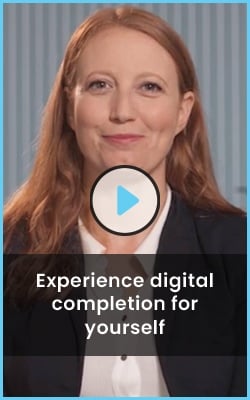Banking News: Digital Frontend Platforms are Making Waves
- Integrating digital messaging platforms is becoming more popular as a result of the current pandemic: Happy State Bank in Texas is beginning to reevaluate how to more efficiently help customers not just during the troubling times, but also in the future.
Unfortunately, the COVID-19 pandemic has made face-to-face interactions a major roadblock for banks and their communications with customers. Customers can no longer walk into a bank with ease to open accounts, make transactions, or fill out applications.
Happy State Bank had already planned on going more digital, but the coronavirus has expedited this process. By using digital platforms like Lightico, their messaging platform has gone from just 244 customer chat sessions in February to over 5,000 in April. Customers enjoy the chat feature because it allows them to get instant, secure feedback.
- Credit Unions are still struggling to keep up with the push towards digital banking: Customers believe challenger banks would be easier to use than credit unions because they can provide easier services. Credit union executives even fear that they may lose customers to challenger banks because they are not as digital-first.
New May surveys done by PYMNTS and PSCU in the
Credit Union Innovation Playbook: Challenger Banks Edition discuss the edge competitor banks have against credit unions.
Credit union member reports state that 32% are fascinated by challenger banks’ online services, and 28.9% feel that their mobile apps would be of a much better quality. Since customers today crave convenience and simplicity, these smaller banks may have the upper hand.
However, this growing competition forces credit unions to focus more on their digital transformation to fight to keep their customers.
- Large banks fail to understand how to help SMBs: JPMorgan ranks last among banks and fintechs in terms of servicing SMBs for their financial needs.
A recent survey by
11:FS states that only 38% of businesses feel that their business banking offers additional benefits compared to their personal accounts. As a result, many are aiming to switch to a more digital service.
The services provided by banks like JPMorgan do not help SMBs advance their finances and make decisions. So, services like PayPal, QuickBooks, and Shopify are proving that especially now, during the pandemic, their digital services can get the job done better.
Auto Finance News: Car Dealerships Going Contactless
- Auto dealerships are one of the most disrupted industries amidst the pandemic: Dealerships have had to shift focus towards going contactless for all three stages of purchasing a vehicle-research, transaction, and post-sale.
COVID-19 gives dealerships no choice but to provide online retailing options to customers. When customers are doing online research, dealers are providing additional online education of Finance & Insurance (F&I) options.
A recent survey states that 87% of car shoppers were dissatisfied with some part of shopping at dealerships, primarily the pressures that accompany F&I. So now, their goal is to limit the tension and make the experience more enjoyable and remote.
Is this the “new normal” for auto dealerships? While customers are still fearful to enter stores and employees continue to work from home, it just might be. Digital retailing is now a necessary component to make transactions and build a new line of trust.
Insurance News: Demand for Digital Experiences
- Customers were ready before, and now they are more ready than ever: Since the coronavirus reshaped everybody’s lives, consumer behaviors are changing drastically. These changes would have happened eventually, though not as quickly.
Surveys conducted by
Capgemini in both 2016 and 2020 show the increased desire for a new insurance experience. In 2016, 17% of people surveyed said they would buy insurance from a larger tech company such as Amazon, Apple or Google. And now, in 2020, the number has gone up to 36%.
After the coronavirus hit, customers became more interested in buying additional life insurance, health insurance, and general insurance products.
How can insurers keep up with the sudden spike in demand? It is important to transform their models to adapt to digital, as well as provide personalized experiences for customers.
- A majority of Americans with employer-based insurance have started using telehealth: Many people are now worried about entering a doctor’s office. They are skipping appointments and opting out of recommended tests.
However, they have found and enjoyed remote alternatives. In recent months, about 16.5 million Americans started using telehealth and 88% stated they would continue to do so.
New employee health benefits are also being provided to help cope with the pandemic such as working from home, health advice, and expanded sick leave.



